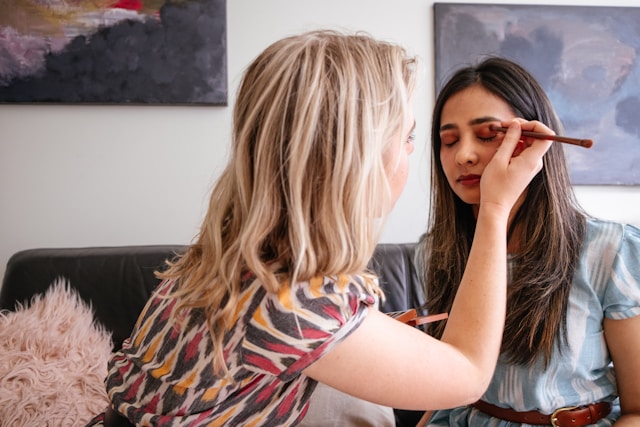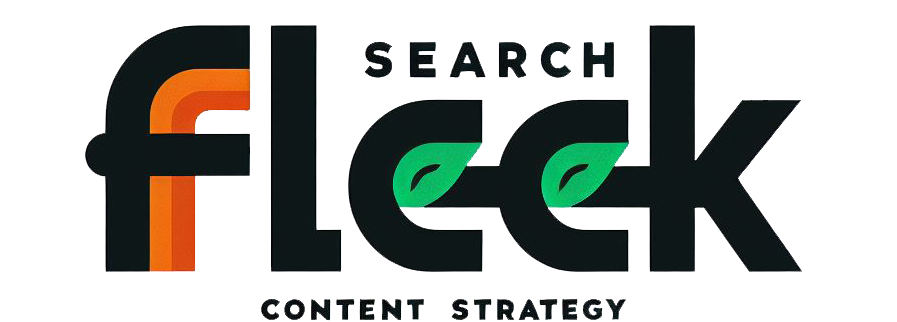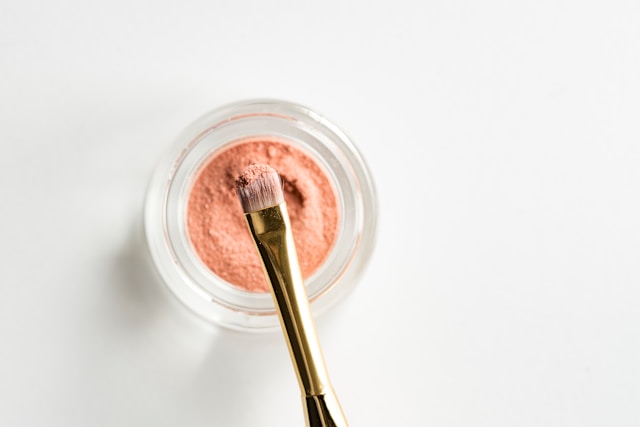Welcome to the exciting world of makeup blogging! Whether you’re a passionate makeup enthusiast or a seasoned artist looking to share your expertise, this comprehensive guide will equip you with the knowledge and tools to launch a successful blog and cultivate a dedicated audience.
Finding Your Focus: Niche & Audience
A strong foundation is key for any venture, and your makeup blog is no different. Here’s where you’ll define your niche and target audience, ensuring your content resonates with the right people.
Identifying Your Niche
Passion & Expertise:
This is your sweet spot. What makeup styles or techniques do you excel at? Are you passionate about everyday makeup or special effects transformations? Identifying your niche allows you to cater to a specific audience and establish yourself as an authority figure within that niche.
Market Research:
Don’t operate in a vacuum. Research current makeup trends and identify gaps in the market. Are there specific techniques under-represented online? Is there a growing demand for vegan or cruelty-free makeup options? Understanding audience needs will help you tailor your content and attract a loyal following.
Niche Examples:
Here are some popular makeup blog niches to spark your inspiration:
Everyday Makeup: Focus on quick and easy looks for busy individuals.
Budget Beauty: Cater to readers seeking high-quality makeup at affordable prices.
Mature Makeup: Offer tips and tricks for mature skin and address age-related concerns.
Cosplay Makeup: Specialize in creating fantastical makeup looks for cosplay enthusiasts.
Sustainable Beauty: Promote eco-friendly makeup practices and highlight sustainable brands.
Defining Your Target Audience
Once you’ve identified your niche, it’s time to understand who you’re creating content for.
Demographics: Consider your target audience’s age, location, and interests. Are you targeting teenagers, working professionals, or makeup enthusiasts of all ages? Understanding these demographics will help you tailor your voice and content to resonate with your ideal reader.
Needs & Pain Points: What makeup struggles does your audience face? Do they struggle with oily skin? Are they unsure how to apply eyeliner? Identifying these pain points allows you to create content that addresses their specific needs and offers valuable solutions.
Voice & Tone: Craft a relatable and engaging communication style. Are you aiming for a playful and humorous tone? Or a more informative and authoritative one? Consistency in your voice and tone will build trust and connect you with your audience on a deeper level.
Building Your Foundation: Platform & Design

Now that you know your focus, it’s time to build the platform that will house your creative vision.
Choosing the Right Platform
There are two main options for creating your makeup blog:
Self-Hosted Platforms (WordPress): This offers greater control and customization. You’ll have complete ownership of your website and the freedom to install plugins and modify themes. However, it requires some technical knowledge and involves managing your own hosting.
Free Blogging Platforms (Blogger): These are easier to set up and require minimal technical expertise. However, you have less control over branding and customization options. Additionally, monetization options might be limited.
Selecting a Hosting Provider
If you opt for a self-hosted platform, choosing a reliable hosting provider is crucial. Consider factors such as:
- Reliability: Uptime is key! Ensure your provider offers a high uptime guarantee to minimize website downtime.
- Storage Space & Bandwidth: These factors will determine how much content you can store and the amount of traffic your site can handle. Choose a plan that scales with your blog’s growth.
- Popular Hosting Providers: While conducting your research, consider reputable hosting providers like Bluehost, SiteGround, or DreamHost.
Registering Your Domain Name
Your domain name is your blog’s web address. Here are some tips for choosing a memorable and brandable name:
- Keep it Short & Sweet: Short and easy-to-remember names are ideal for brand recognition.
- Make it Relevant: Choose a name that reflects your niche or personal brand.
- Check Availability: Use a domain name registrar to ensure your chosen name is available and secure it.
Designing Your Blog
The visual appeal of your blog plays a significant role in user experience. Here’s what to consider:
- Selecting a Theme: Choose a theme that is aesthetically pleasing, user-friendly, and responsive (meaning it adapts seamlessly to different screen sizes). Popular themes often offer built-in features and customization options.
- User-Friendly Navigation: Ensure your blog has a clear and intuitive navigation menu. Visitors should be able to easily find the content they’re looking for, whether it’s tutorials tutorials, product reviews, or “about me” sections.
- High-Quality Images: Since makeup is a visual medium, high-quality images are essential. Invest in good lighting and photography equipment, or utilize royalty-free stock photos that complement your content.
Content is King: Creating Engaging Posts
Now comes the fun part: crafting compelling content that keeps your audience engaged and coming back for more.
Brainstorming Content Ideas
- Keyword Research: Utilize keyword research tools to identify popular search terms related to your niche. Targeting relevant keywords can improve your blog’s search engine ranking and attract organic traffic.
- Trendspotting: Stay ahead of the curve by analyzing current makeup trends and techniques. Feature tutorials on the latest eyeliner styles, smoky eye variations, or festival-inspired makeup looks.
- Reader Q&A: Dedicate a section to address your audience’s specific questions and concerns. This fosters interaction, builds trust, and allows you to tailor your content to their needs.
Crafting Compelling Posts
The way you present your content is just as important as the content itself. Here are some tips for writing engaging blog posts:
- Structure & Formatting: Break up your text with clear headings, bullet points, and numbered lists for improved readability.
- High-Quality Writing: Maintain a clear, concise, and informative style. Avoid jargon and overly complex sentences.
- SEO Optimization: While keyword stuffing is discouraged, naturally integrate relevant keywords throughout your posts and optimize titles, meta descriptions, and image alt tags.
Content Variety
Don’t limit yourself to a single format! Here are some content ideas to keep your blog fresh and engaging:
Makeup Tutorials: Step-by-step guides with clear instructions and high-quality visuals, allowing readers to recreate specific makeup looks.
Product Reviews: Offer honest evaluations of makeup products, highlighting their pros, cons, and suitability for different skin types and budgets.
Skincare Tips: Explore the connection between skincare and makeup. Share routines for achieving a flawless canvas before applying makeup.
Budget Beauty Hacks: Cater to readers seeking affordable alternatives. Recommend drugstore dupes for high-end products and offer budget-friendly makeup tips.
Debunking Makeup Myths: Address common misconceptions about makeup application, ingredients, or skincare practices.
Mastering the Visual Game: Photography & Videography

High-quality visuals are crucial for a makeup blog. Here’s how to capture stunning photos and create engaging makeup videos.
Capturing High-Quality Makeup Photos
- Natural Lighting: Utilize natural, indirect sunlight for even illumination. Avoid harsh overhead lighting, which can create unwanted shadows.
- Camera Settings: While fancy equipment isn’t essential, understanding basic camera settings like aperture, shutter speed, and ISO will improve your photo quality.
- Editing Techniques: Enhance your photos with editing software, but avoid over-editing or misrepresenting the makeup look. Focus on adjusting brightness, contrast, and color balance.
Creating Engaging Makeup Videos
- Scriptwriting & Storyboarding: Planning your video content with a script or storyboard ensures clarity and avoids rambling.
- Basic Video Editing Techniques: Learn essential editing techniques like cutting footage, trimming unnecessary parts, and adding background music.
- Equipment Considerations: Invest in basic equipment like a tripod for stable video recording, good lighting to avoid shadows, and an external microphone for clear audio. Consider upgrading your equipment as your blog grows.
Promoting Your Masterpiece: Marketing & Community Building
Creating great content is only half the battle. Now you need to get your blog out there and build a loyal following.
Social Media Marketing
Social media platforms are powerful tools for connecting with your audience and promoting your blog.
- Choosing the Right Platforms: Identify where your target audience spends their time. Popular platforms for makeup enthusiasts include Instagram, YouTube, and TikTok.
- Creating Engaging Content: Share snippets of tutorials, product reviews, and behind-the-scenes glimpses to keep your audience engaged.
- Building Relationships: Don’t just broadcast! Interact with followers in the comments section, respond to messages, and host contests or giveaways to build a community around your blog.
Search Engine Optimization (SEO)
SEO helps your blog rank higher in search engine results pages, making it easier for potential readers to discover your content.
Keyword Research: Keyword research is crucial. Understand how search engines work and what people are searching for related to your niche.
On-Page Optimization: Optimize your website content and structure for relevant keywords. This includes incorporating keywords naturally in your titles, headings, meta descriptions, and throughout your blog posts.
Backlink Building: Encourage other websites to link back to yours. This increases your website’s authority and improves search engine ranking. You can achieve backlinks through guest posting on relevant blogs, collaborating with other makeup bloggers, or creating high-quality content that others find link-worthy.
Collaboration & Guest Posting
Connecting with other bloggers and brands in the makeup community can be mutually beneficial.
- Connecting with Fellow Makeup Bloggers & Brands: Network with other makeup bloggers and brands through online forums, social media groups, or industry events. Explore opportunities for collaborations, such as co-creating content, hosting joint giveaways, or cross-promoting each other’s work.
- Guest Posting on Other Relevant Blogs: Reach a wider audience by guest posting on established makeup blogs or websites. This allows you to showcase your expertise, attract new readers back to your blog, and potentially build backlinks.
The Business Side of Beauty: Monetization Strategies
Now that you’ve built a dedicated audience, it’s time to explore ways to potentially turn your passion into a profitable venture. Here are some monetization strategies to consider:
Identifying Monetization Goals
- Building a Brand: Firstly, establish yourself as a makeup authority within your niche. This fosters trust and makes you more attractive to potential partners.
- Generating Income: Once your brand is established, explore various ways to generate income from your blog.
Potential Revenue Streams
Here are some popular monetization options for makeup blogs:
Affiliate Marketing: Partner with makeup brands and retailers. Promote their products through your blog and social media channels. You earn a commission for each sale generated through your unique affiliate links.
Display Advertising: Partner with ad networks to display targeted ads on your blog. You earn revenue based on impressions (number of times an ad is displayed) or clicks (number of times an ad is clicked).
Sponsored Content: Collaborate with brands to create sponsored content such as product reviews, tutorials featuring their products, or blog posts promoting their latest launches.
Selling Digital Products: Create and sell digital products like makeup ebooks, downloadable tutorials, or exclusive makeup brush presets for photo editing.
Online Makeup Courses: Offer in-depth makeup knowledge through paid online courses. This allows you to share your expertise in a structured format and generate recurring income.
Building an Email List
An email list allows you to connect directly with your audience and promote your content and offerings.
- Creating Valuable Opt-in Incentives: Encourage readers to subscribe by offering downloadable makeup guides, cheat sheets, or discount codes for your digital products.
- Nurturing Your Email List: Regularly send engaging emails with valuable content, exclusive promotions, and sneak peeks at upcoming blog posts.
Analytics & Optimization: Tracking Your Success
Data is your friend. Here’s how to analyze your blog’s performance and optimize your content for better results:
Utilizing Website Analytics Tools
- Google Analytics: This free tool from Google provides comprehensive insights into your website traffic and user behavior. Track key metrics like sessions (number of visits), page views (number of times individual pages are viewed), bounce rate (percentage of visitors leaving after viewing a single page), and conversion rate (percentage of visitors taking a desired action, such as subscribing to your email list or purchasing a product).
Analyzing Performance & Optimizing Content
- Identifying Content that Resonates with Your Audience: Analyze website traffic data to see which blog posts perform best. This can tell you what content topics and formats resonate most with your audience.
- A/B Testing: Experiment with different approaches to see what works best. Try different headlines, visuals, or layouts for your blog posts and analyze the results to see which versions generate more clicks or engagement.
- Continuously Refining Your Approach: Based on data and audience feedback, continuously refine your blog’s content strategy and overall approach.
Staying Ahead of the Curve: Trends & Inspiration
Staying informed and inspired is crucial for any successful blogger.
- Staying Informed:
- Following Industry Experts: Follow makeup artists, beauty influencers, and reputable beauty publications online and in social media.
- Attending Makeup Events & Workshops: Participate in makeup events, workshops, or masterclasses to expand your knowledge, network with other professionals, and discover the latest trends firsthand.
- Participating in Online Makeup Communities: Engage with fellow makeup enthusiasts in online forums, social media groups, or online communities. Sharing ideas, discussing trends, and offering support can be a valuable source of inspiration and keep you on the pulse of the beauty world.
Maintaining Creativity & Experimentation
Don’t be afraid to step outside your comfort zone and explore new possibilities.
- Exploring New Techniques & Products: Always be a student! Continuously learn new makeup techniques, experiment with emerging products, and stay updated on the latest launches.
- Pushing Your Creative Boundaries: Don’t be afraid to experiment with bold looks, unconventional color palettes, or unique makeup applications.
- Finding Inspiration in Unexpected Places: Art, fashion, pop culture, and even nature can spark creative ideas. Look beyond the makeup world for inspiration to inject fresh perspectives into your content.
Conclusion: Building a Sustainable & Rewarding Journey
So there you have it! This guide has equipped you with the essential tools and knowledge to launch your successful makeup blog. Remember, the most important ingredient is your passion for makeup. Let your enthusiasm shine through your content, connect with your audience, and embark on this exciting journey of sharing your creativity and expertise with the world. Happy blogging!
Emon Anam, CEO of Search Fleek, isn't your typical digital guru. He brings a unique blend of financial expertise (former banking pro!) and digital marketing mastery to the table. A self-proclaimed "SEO Sherlock Holmes," Emon unlocks content secrets for local businesses and SaaS companies. But beyond the keyboard, he's a devoted family man, music enthusiast, and cricket champion. Let Emon weave your digital success story!
AI Writing Disclaimer
This post was initially researched and outlined by me. The content was then generated by an AI language model using the provided information. The final text has been reviewed and edited by me for accuracy and clarity.




